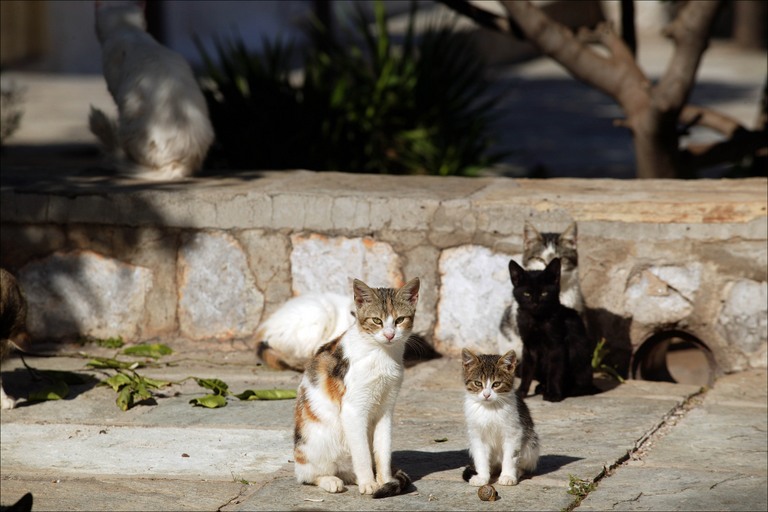News – Stray Cats
 STRAY CATS: WHAT TO DO
STRAY CATS: WHAT TO DO
Everyone experiences them. They are thin and slick. We hardly see them during the day. Sometimes they urinate on our lawn furniture or in our children’s sandboxes. You might not mind them being around if they weren’t destructive. They are stray cats.
Sometimes these strays are fed by kind hearted people who want to do good for the animal, but feeding stray cats is not like feeding the birds. Cats are domesticated animals that need our love, attention, medical care, and a warm cozy home, along with the basics such as food and water. It is so easy to turn our head and look the other way, saying to ourselves “they will be fine” or “cats can live on their own.” But while we are looking the other way, they are producing two to three litters a year and before you know it, two years down the road, there are twenty cats in your back yard, hungry and sometimes in desperate need of medical attention.
There is a solution. You can trap them and bring them into your local animal shelter. At the SPCA of Luzerne County, the shelter staff will determine the stray cat’s health and sociability. The cat may be placed for adoption. Many won’t be placed. Why? We don’t have the resources (space, staff, and money) to socialize them (which takes months and isn’t always successful). Truth be told, we have plenty of already socialized cats in good health that need homes.
You may think that this sounds horrible. After all, if you left them alone, at least they would be alive, right? Wrong! Most outdoor cats have a life span of about 3 years (compared to house cats whose life span is 12-20 years) and die horrible deaths related to injuries from getting hit by a car, abscessed wounds from cat fights, lack of food, lack of a warm shelter, disease, poisonings, or perhaps due to a wild predator’s jaw. Considering this, euthanasia sounds a whole lot better. A humane death is not the worse case scenario for feral cats. Plus, this eliminates uncontrolled breeding in which many cats will suffer the same difficult lifestyle.
Another option you may take – would be to trap the cat, get him or her neutered, and release the cat. Is this an acceptable option? If you are willing to get a microchip for the cat, and provide food and veterinary care on a regular basis, then yes, it is a good option. This takes a strong commitment on the part of the person who is going to take responsibility for the cat though. A trap needs to be purchased so that it is at your disposal if you notice your cat needs vet care. Bearing in mind that an outdoor cat needs a lot more veterinary care, be sure that you have the money available. You should also be sure to be respectful of your neighbors who may not be happy with your decision. There is a possibility that they may trap them and bring them to your local shelter. IT IS NOT ILLEGEAL FOR A PERSON TO TRAP ON THEIR OWN PROPERTY.
Both are solutions. One is not better that the other. Which you choose depends on your resources and your willingness to commit yourself to this animal’s greatest well being.
